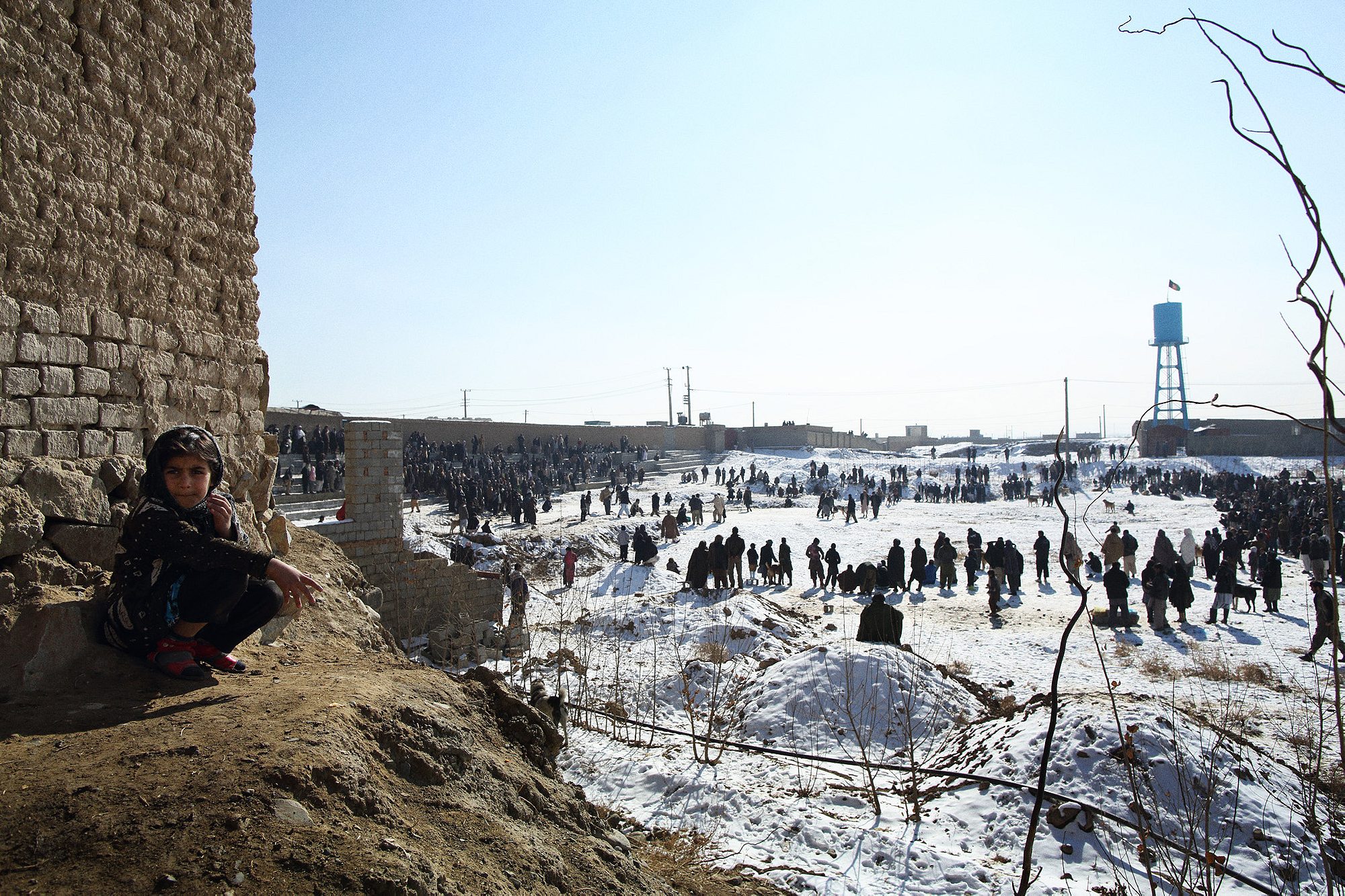The Australian photographer looks at daily life in a country that the international community is forgetting.
It was early morning in Kabul and Andrew Quilty was sipping tea with a group of men. It had been snowing outside; the wood heater was burning in a corner of the room. While a young boy collected tea glasses on a tray, the men discussed the possible outcomes of the day ahead. There was a lot at stake: In a few moments, dogs the men owned and trained would be competing in a bloody fighting competition. Strange though it many seem, the scene seemed familiar to Quilty: it reminded him of pre-rugby game mornings in his home of Sydney, 7,000 miles away. The young Australian photographer had only been in Afghanistan for a couple of days when he started shooting the dog training and fighting that took place on the hills around the capital. More than a year after his first visit, the country has become his home. He joined R&K from the town of Mazari Sharif.
Roads & Kingdoms: Hi Andrew, where exactly is Mazari Sharif?
Andrew Quilty: North of Kabul, towards the border with Uzbekistan. It’s one of the more mellow cities in Afghanistan. I live in Kabul but I’m on assignment here for a couple of days with the Washington Post.
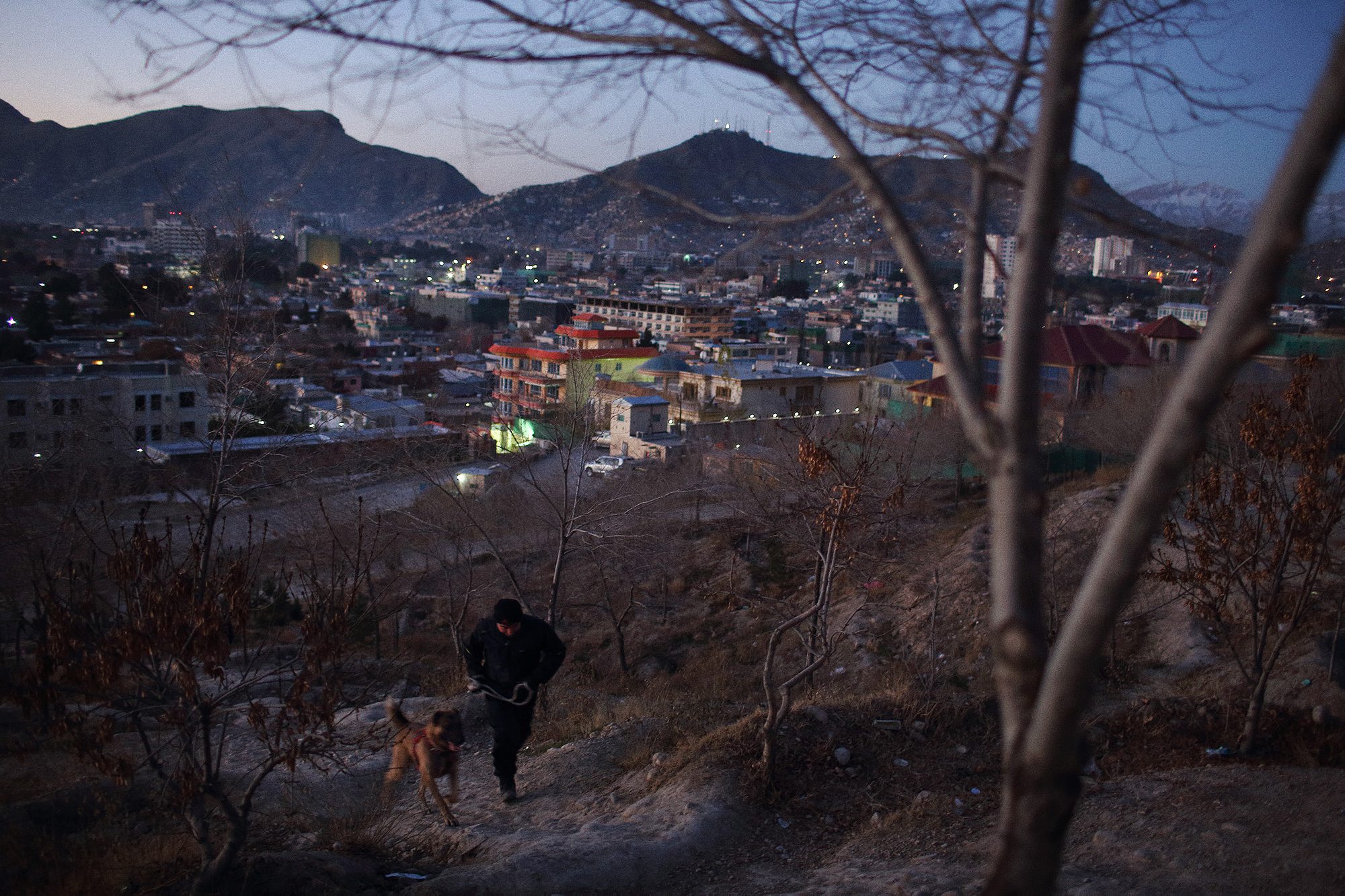
R&K: I’m glad we finally connected, it was funny when you wrote that you’d have more free time to answer emails once you were back in Afghanistan…
Quilty: It’s really weird, I find holidays in Sydney during the summertime so much more stressful than working in Afghanistan, which is completely counterintuitive.
R&K: Good to know you can relax now. So when did you encounter the fighting dogs for the first time?
Quilty: When I first arrived in Kabul, I was very grave, for one thing. I hadn’t spent any time in conflict zones apart from about a month in Lebanon. I was able to stay with a friend who worked at Reuters. One night over dinner he told me about the fighting dogs that train up the hill from their bureau every morning during winter, so the next day I got up before sunrise and walked up to the top of this hill, which has a view right across Kabul. Sure enough there was a handful of men and these gargantuan beasts with ears and tails clipped.
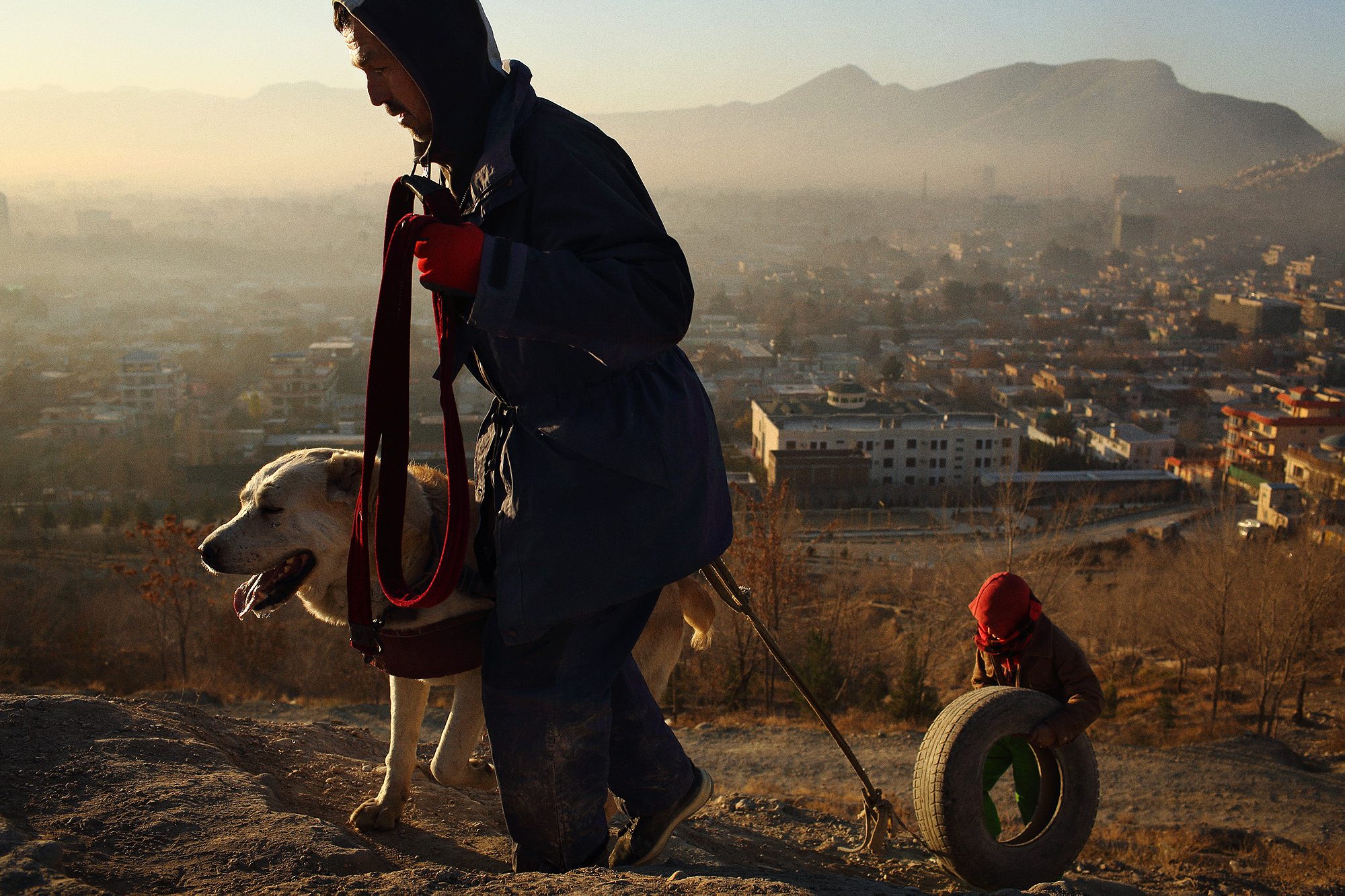
R&K: Can you describe what takes place exactly during these fights?
Quilty: The first challenge is finding out where the event actually is. Like a lot of things in Afghanistan, dog fighting is semi-legal. It’s tolerated by the police, but they can’t be seen to be encouraging it. Generally speaking, they took place in a cleared field or an empty lot. Somehow everyone just knew where. There were 15 or 20 dogs scattered throughout the crowd held with chains or heavy duty leads. A big crowd would form a ring, which became the boundary of the fight and then there would be a referee. It was always the same guy, this wild extravagant man, who wore capes and had a staff, which he whacked people in the crowd with if they got too close. He was almost like a matador in a bull fight. It was all very theatrical, but for me the dog fight itself was almost like a sideshow to the people watching it. And they were always in spectacular places, like at the base of a mountain or a snow-covered empty lot or something.

R&K: You mention the training and the fights take place early in the morning, in remote places and only during the winter. Are they hiding?
Quilty: There’s probably an element of that. It, along with all other sports, was banned during the Taliban years. It’s seen as haram (sinful), as is the term in Islam. Some of these fights have been attacked before by suicide bombers. There was one in Kandahar, I think, where a huge number of people was killed and another fight that we were trying to go to that had been shut down because someone had been found with a dozen grenades in their coat and a magnet bomb had been stuck under a car.

You could always tell when there was a prizefighter about to enter the ring
R&K: What was the crowd like at these gatherings?
Quilty: I guess it’s probably equivalent to a Nascar kind of crowd. But you also have these very rich, powerful guys too. In fact, one of Hamid Karzai’s brothers was a big fan and had one of the most successful dogs in the country. He was supposed to attend the fight I mentioned that got closed down because of a threat. I think that’s why it was targeted.
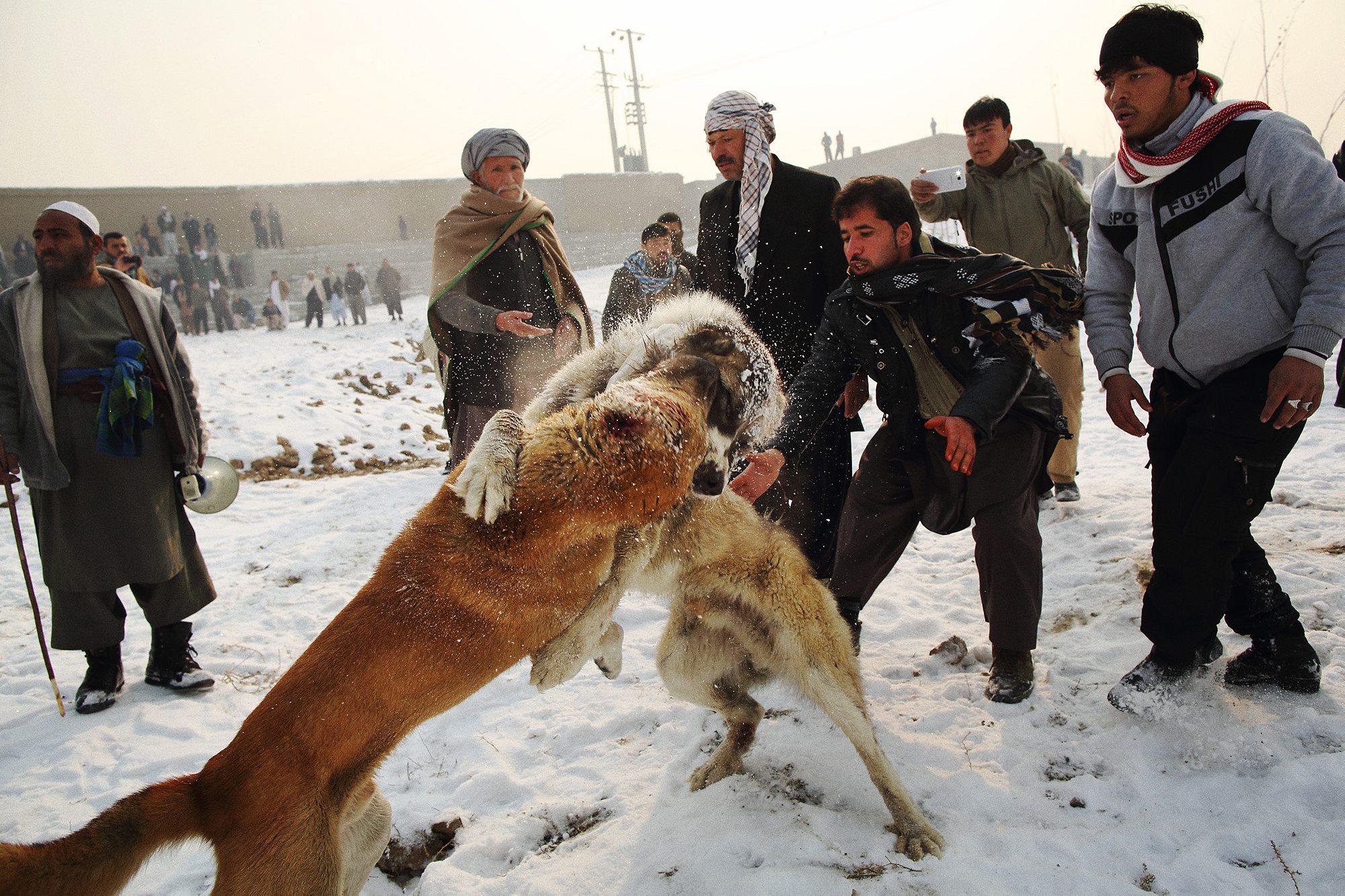
R&K: Is there money involved?
Quilty: Yes. There’s definitely betting. It’s hard to see how much money is being thrown around but I think its significant. You could always tell when there was a prizefighter about to enter the ring, because you’d see these little posses of men come forward. They would all have wads of cash in their hands. Winning dogs do become worth a lot of money. The guy that I became closest to said his dog, which was one of the top three dogs in the country, was worth $100,000. But he said he would never sell it. The dog was like family to him.
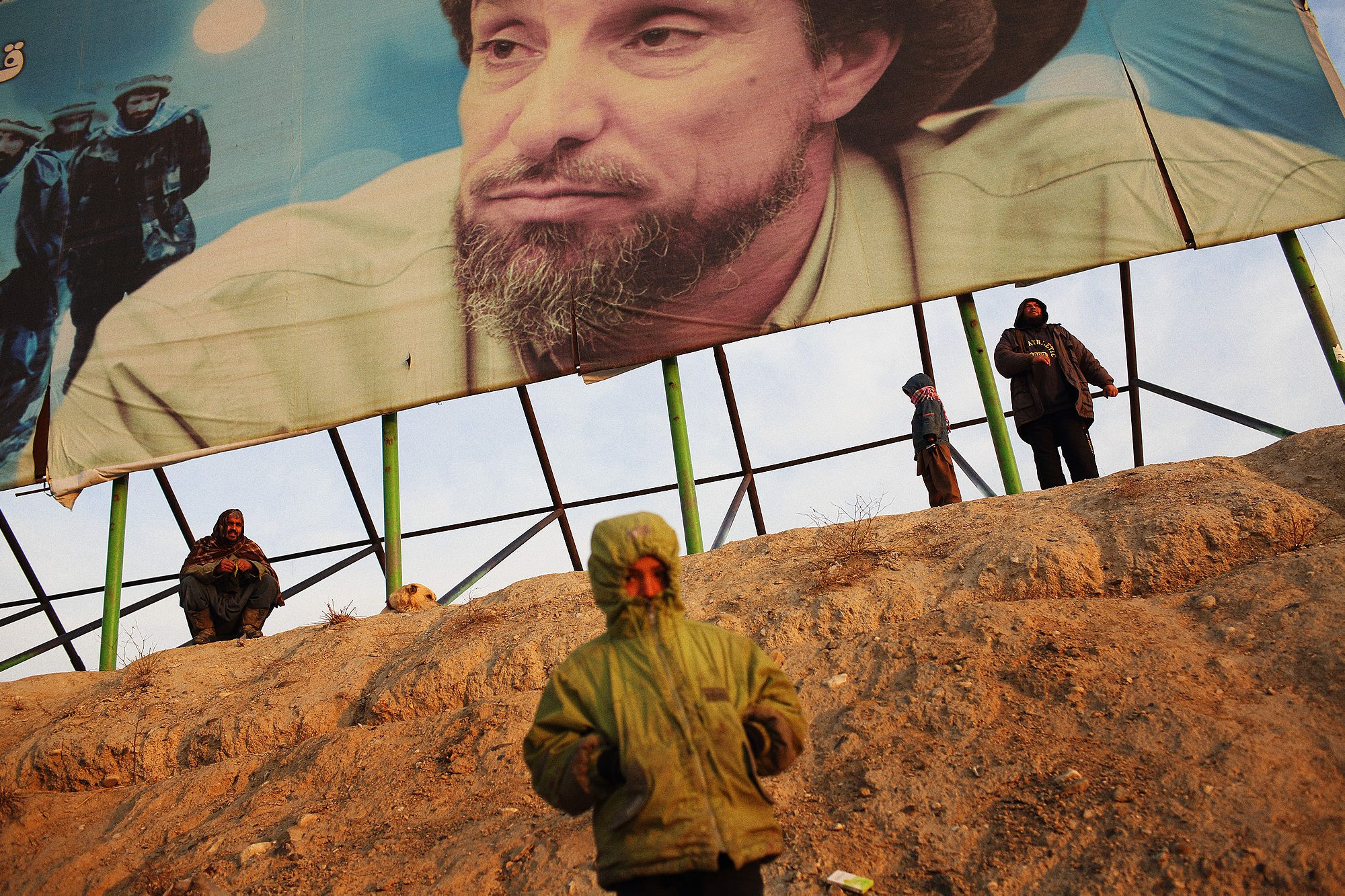
R&K: I’m interested in getting your perspective as a photographer working in a conflict zone that is getting less and less attention from the international community. You arrived much later than most journalists. How did you deal with that?
Quilty: All this was incredibly new to me. I suppose it’s just a matter of timing. It just happened that I was ready or willing to go there 12 years into a war that has captured the West’s attention for so long. You’re definitely right, the attention has waned a lot, but I don’t think it’s any less interesting. It’s sad in a way that our interest is dictated so much by our own country’s interest in these places. From my perspective, there are a few Australian troops left here but officially we left about at the time I arrived. Since then, there’s been very little interest from my home country. And I assume that in the U.S. it will be the case when the military pulls out. But that doesn’t make it any less compelling visually and just as a story in general. I realized that I had come in at the end of the party, so to speak, when I went to northern Iraq last summer. There, I felt like I was coming into the first chapter of the story about the Islamic State. But I’m happy to be in Afghanistan now while there’s not so much attention, to be a small part of keeping the story going.
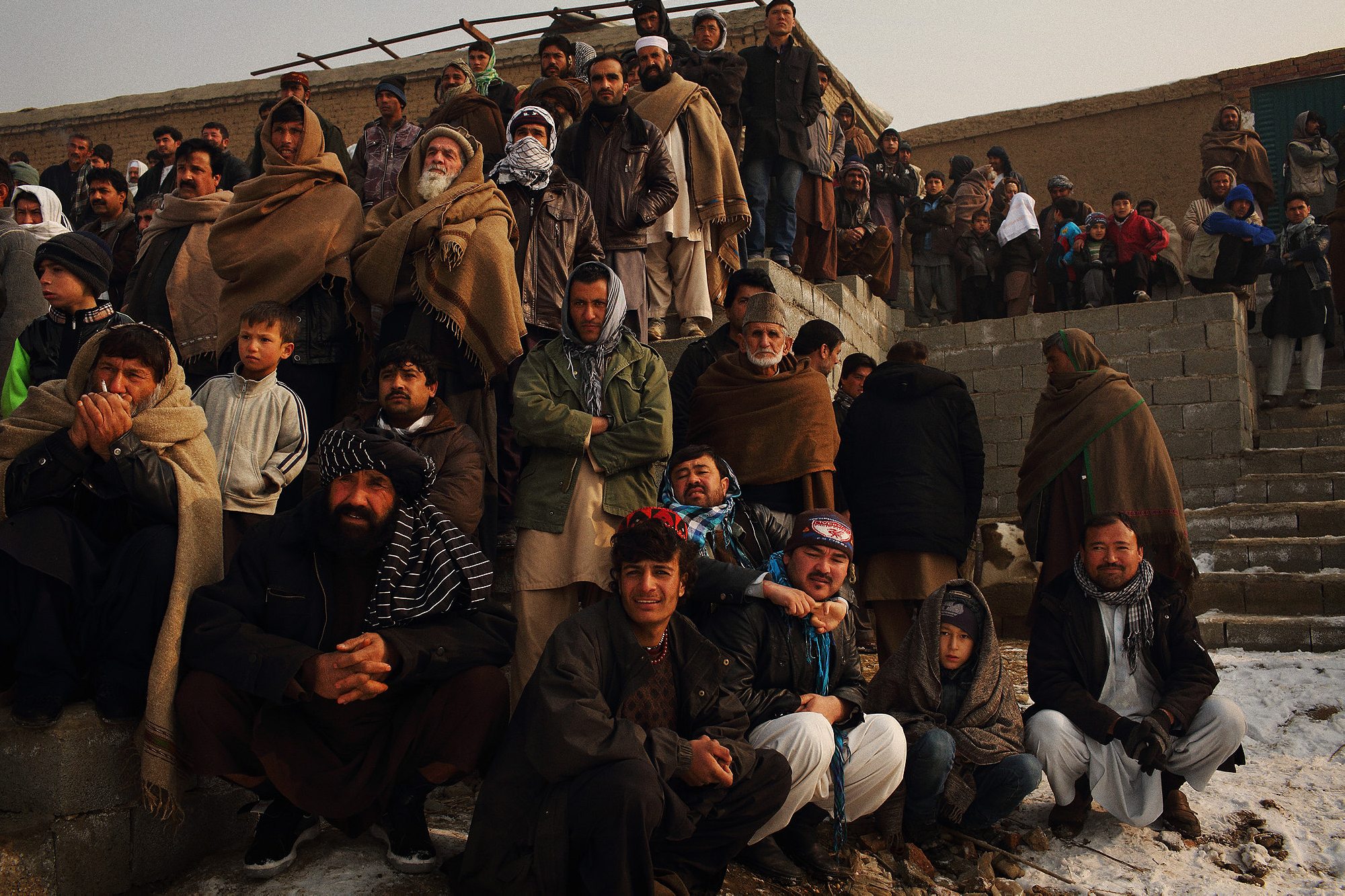
R&K: How much conflict do you cover?
Quilty: I shy away from that term, conflict photographer or war photographer, because I don’t think I am one at all. What I’m interested in is people, civilians, who are on the edge of these conflicts. For me, that’s the really interesting subject matter and something that’s probably easily overlooked. The empathy we have for U.S. soldiers, for example, who come to these places and go home tormented and missing limbs and things… You hear so little about the people who had no choice in the matter as to whether they would be involved in these conflicts or not. It’s very worthy subject matter. I feel it’s so worthwhile being here in comparison to what I might be doing if I was back in Sydney. Here, I can’t remember getting an assignment that I dreaded doing or was resentful of doing. There’s less work, but all the work is good and meaningful and highly fulfilling.

R&K: How would you say the dog fighters story fits this philosophy?
Quilty: One of the things I love about Afghanistan is that it’s so hard to point a camera anywhere without it being imbued with such symbolism, such history. I’ve never experienced this before. In that sense, the fighting dogs are important and indicative because they show progress from the Taliban years, when so many liberties were banned. I’m not sure the dogs would agree though.
I certainly don’t see widespread peace coming to Afghanistan anytime soon. No way

R&K: How did you feel while you were shooting these fights?
Quilty: Strangely, the dogs were the least of my concerns. That’s the thing about Afghanistan, particularly when you work through a lens and your periphery is all blocked out. You really have to be aware of your surroundings and what’s going on all around you rather than just what you can see. You put that environment on top of the violence and theater of the dog fights, and it’s really quite an adrenalizing atmosphere. You’re ultra aware, all five senses working overtime even subconsciously. I remember each time I’d get home from a fight, I’d just be wrecked, so exhausted.
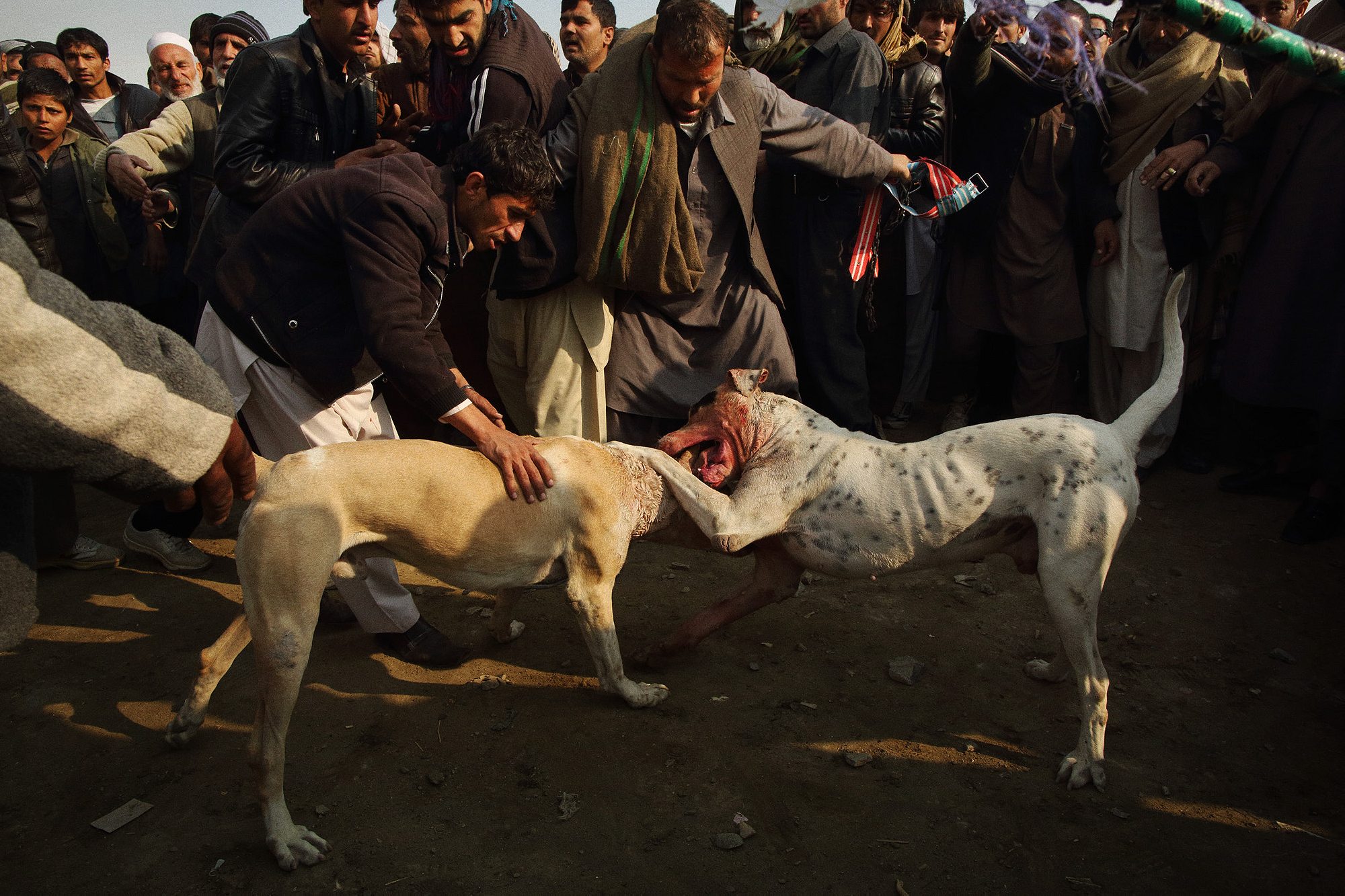
R&K: Do you have plans to stay in Afghanistan for a while?
Quilty: Yes, I have no plans to leave anytime soon. I’m enjoying myself and I really want to get around and see a lot more of the country before I think about leaving.
R&K: How would you describe the state of the country today? What are some of the conversations you have with people about the future?
Quilty: It’s so complex, you know. You’ll speak to one person and they’ll be really positive about the future. With the next person, it will be the complete opposite. They will see no hope and will be talking about finding asylum in another country. I certainly don’t see widespread peace coming to Afghanistan anytime soon. No way. When you’re in Kabul, it’s a bit of a bubble, and you can easily be swayed by what politicians say and what you see in the streets there. There’s a big police and army presence and it is relatively safe. But as soon as you leave the city limits of Kabul, it’s another story altogether. Not only every province but every district and every village is a different ballgame and that’s one of the other things that keep me here. The more you learn about this country, the less you understand.
